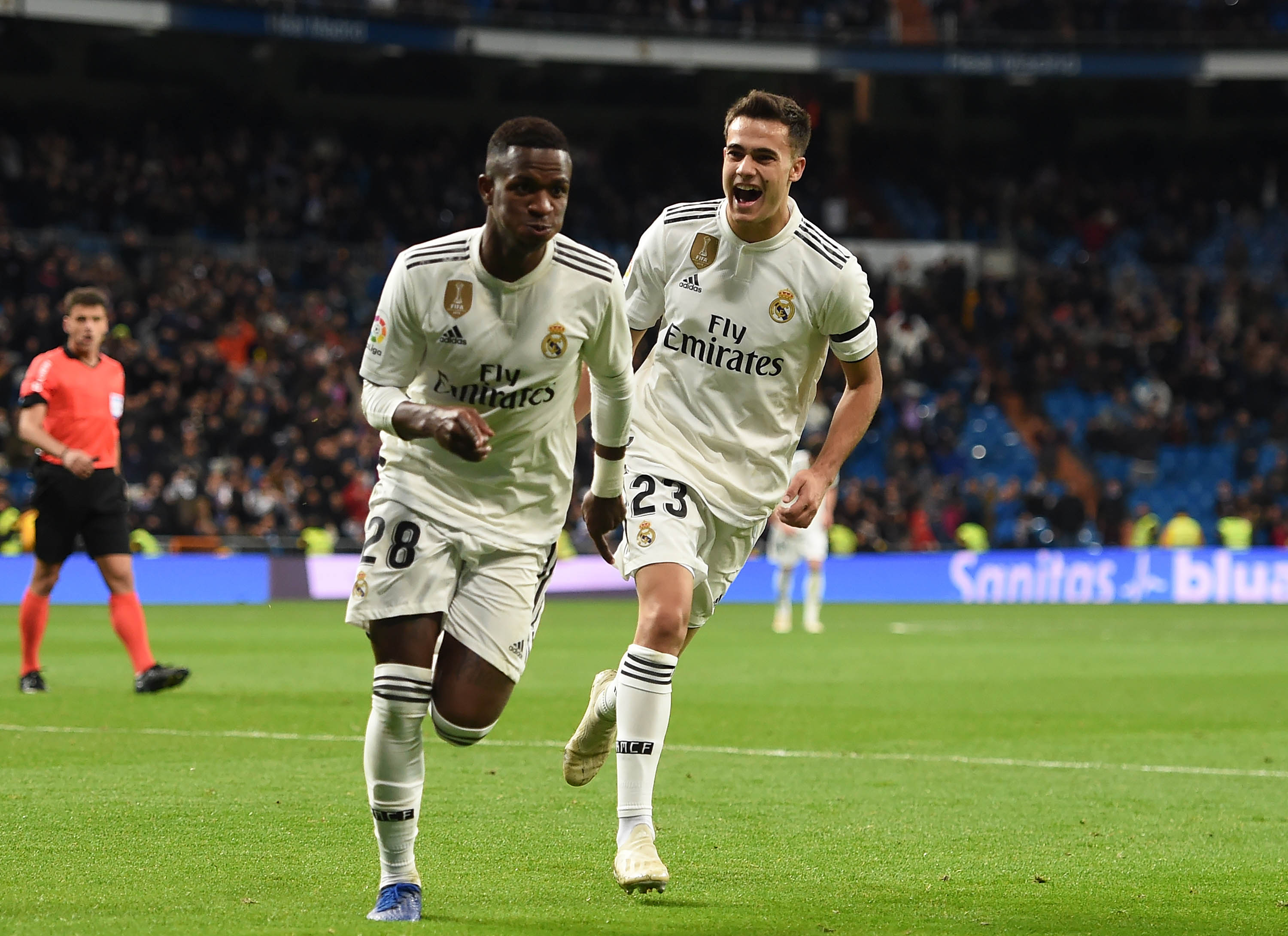
Not long ago, Barcelona set the benchmark in the development of young players, and Real Madrid’s squad was packed full of costly superstar imports.
How times have changed.
Sergi Roberto is the only player to have progressed through Barca’s youth ranks to become a first team regular in the last few years, and the apparent reluctance of coach Ernesto Valverde to use players from La Masia has been a major talking point in the Catalan media.
At Madrid, meanwhile, the last real Galactico signing was James Rodriguez more than four years ago (although you could perhaps include Thibaut Courtois last summer), and since then the club has focused – with varying degrees of success – on recruiting talented young Spanish players such as Marco Asensio, Marcos Llorente and, most recently, Brahim Diaz.
Los Blancos have also been giving far more chances to youngsters from their own youth system, with Lucas Vazquez, Nacho and Alvaro Morata initially leading the way and many others now following.
Sunday’s victory at Real Betis was the most extreme example yet, as manager Santi Solari fielded no less than seven players who had previously spent time in the club’s junior ranks: Nacho, Dani Carvajal, Casemiro, Fede Valverde, Sergio Reguilon, Vinicius Junior and Cristo Gonzalez, while teenager Brahim was also given his debut from the bench.
🆕💬 @Brahim: FIRST @RealMadrid interview!#WelcomeBrahim | #HalaMadrid pic.twitter.com/5HD6lg4x0T
— Real Madrid C.F. 🇬🇧🇺🇸 (@realmadriden) January 8, 2019
We should avoid drawing too many conclusions from that statistic because it was an exceptional game: Solari is dealing with an extremely lengthy injury list and also appears to be under instructions to keep Isco away from the field of play. In the circumstances he had little choice, and it’s unlikely we’ll see much more of Cristo or Brahim in the coming weeks once the treatment table starts to clear.
But the interesting point is that those players are in the squad at all, available to help out in times of crisis. That just isn’t the case anymore at Barcelona, where the options for squad rotation over the last couple of years have been players like Lucas Digne, Andre Gomes, Paco Alcacer and Thomas Vermaelen.
The reopening of the transfer window this month has underlined where Barca are now ‘at’ in terms of their squad construction: when injuries to Samuel Umtiti and Vermaelen created the need for an extra centre-back as emergency cover, they didn’t promote a youth team player but instead signed Jeison Murillo on loan from Valencia.
And their only other piece of business so far in January has been to sell academy product Munir El Haddadi to Sevilla, meaning another back-up to Luis Suarez needs to be recruited – and you can bet it won’t come from La Masía, in the same way that Cristo has been elevated to senior status in Madrid.
For now, then, we should start to regard Real Madrid as arguably the greatest developers of young talent among elite clubs, while Barcelona have become purchasers of proven professionals.
Of course, it may not necessarily stay that way. The exit of Cristiano Ronaldo, the ongoing injury issues suffered by Gareth Bale, Isco’s strange fall from grace and the advancing age of Luka Modric, Sergio Ramos and Marcelo means that Madrid are in need of a pretty major overhaul to their squad.
Over the next couple of years it could well be the case the Los Blancos president Florentino Perez loosens the purse strings to snap up a new batch of superstars, with Eden Hazard and Genoa frontman Krzysztof Piatek perhaps at the front of the queue.
But don’t count on it. Madrid’s first team squad currently possesses 15 players aged 23 or below, and the path followed by the club in recent years has been youthful promise rather than expensive megastars. Not all those young players will make it, but at least they can be confident of being given a fair chance.